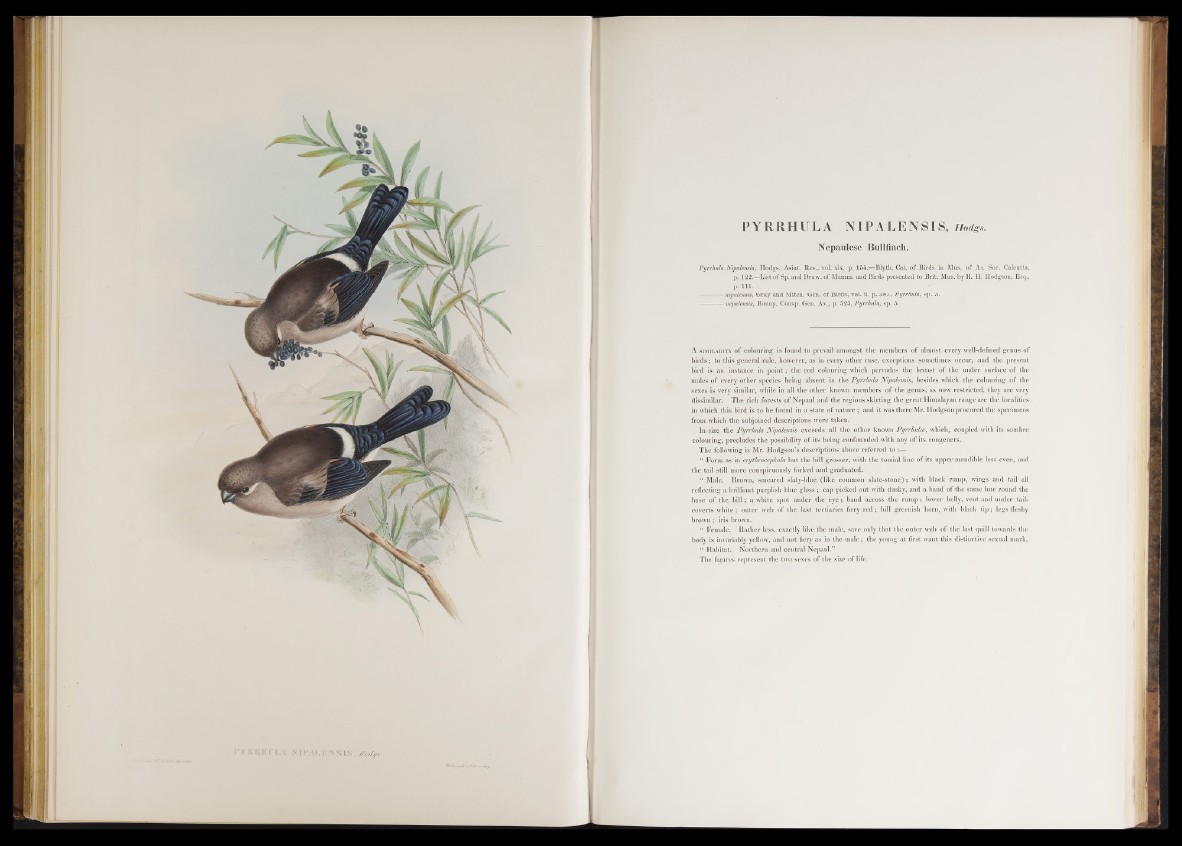
PYRRHULA NIPALENSIS, Hodgs.
Nepaulese Bullfinch.
Pyrrhula Nipalensis, Hodgs. Asiat. Res., vol. six. p. 155.— Blyth, Cat. of Birds in Mus. of As. Soc. Calcutta,
p. 122.—L ist of Sp. and Draw, o f Mamm. and Birds presented to Brit. Mus. by R. H. Hodgson, Esq.,
p. 111.
nipalensis, Gray and Mitch. Gen. o f B irds, vol. ii. p. 387, Pyrrhula, sp. 3.
nepalensis, Bonap. Consp. Gen. Av., p. 525, Pyrrhula, sp. 5.
A s im ila r ity o f colouring is found to prevail amongst the members of almost every well-defined genus of
b irds; to this general rule, however, as in every other case, exceptions sometimes occur, an d .th e present
bird is an instance in p o in t; the red colouring which pervades the breast of the under surface of the
males of every other species being absent in the Pyrrhula Nipalensis, besides which the colouring of the
sexes is very similar, while in all the other known members of the genus, as now restricted, they are very
dissimilar. The rich forests of Nepaul and the regions skirtiug the great Himalayan range are the localities
in which this bird is to be found in a state of nature ; and it was there Mr. Hodgson procured the specimens
from which the subjoined descriptions were taken.
In size the Pyrrhula Nipalensis exceeds all the other known Pyrrhula, which, coupled with its sombre
colouring, precludes the possibility of its being confounded with any of its congeners.
The following is Mr. Hodgson’s descriptions above referred to ■
“ Form as in erythrocephala but the bill grosser, with the tomial line of its upper mandible less even, and
the tail still more conspicuously forked and graduated.
“ Male. Brown, smeared slaty-blue (like common slate-stone) ; with black rump, wings and tail all
reflecting a brilliant purplish blue gloss ; cap picked out with dusky, and a band of the same hue round the
base of the b ill; a white spot under the e y e ; band across the rum p ; lower belly, vent and under tail-
coverts wh ite; outer web of the last tertiaries fiery r e d ; bill greenish horn, with black t ip ; legs fleshy
brown ; iris brown.
“ Female. Rather less, exactly like the male, save only that the outer web of the last quill towards the
body is invariably yellow, and not fiery as in the male; the young at first want this distinctive sexual mark.
“ Habitat. Northern and central Nepaul.”
The figures represent the two sexes of the size of life.